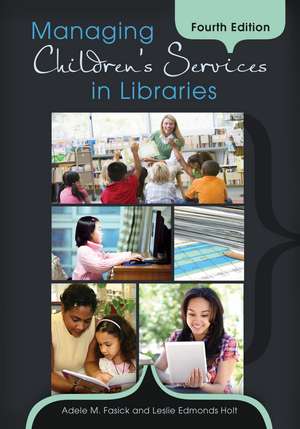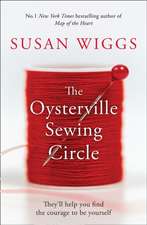Managing Children's Services in Libraries
Autor Adele M. Fasick, Leslie Edmonds Holten Limba Engleză Paperback – 9 dec 2012 – vârsta până la 17 ani
Managing Children's Services in Libraries, Fourth Edition is designed to give students and new library workers the skills they need to succeed as well as get experienced librarians up to speed on the new developments in technology, publishing, and education. The book takes a broad view of all aspects of library work with children, addressing the dramatic and ongoing changes in school and pubic libraries.
This latest edition of a popular, proven resource focuses on practical ways to organize library services to children and the adults who care for them, and on expanding services from the building level to the greater community. Sections focus specifically on collections, planning services, managing personnel and budgets, and working with other community agencies. The book is written to serve as a textbook for courses in services to children and young adults, and is appropriate for short workshops and in-service training for library staff. Administrators and department heads will find it a useful tool for designing and updating library services.
Preț: 307.01 lei
Preț vechi: 354.35 lei
-13% Nou
58.74€ • 61.34$ • 48.51£
Carte disponibilă
Livrare economică 25 martie-08 aprilie
Specificații
ISBN-10: 1610691008
Pagini: 240
Dimensiuni: 178 x 254 x 20 mm
Greutate: 0.45 kg
Ediția:Revised
Editura: Bloomsbury Publishing
Colecția Libraries Unlimited
Locul publicării:New York, United States
Notă biografică
Cuprins
Recenzii
Though it covers numerous topics related to children's services, it does so effectively and concisely, making this an excellent resource for any library that serves children. It could help a library prepare to offer children's services to get the ball rolling, but could also help libraries with these services to maintain and expand them. This title could also appear on the list of textbooks for classes discussing children's services. Whether for a small library or part of a larger library system, this is a must-have resource.
"Administrators, department heads, and professional development coordinators will find this book to be a useful teaching tool for designing and updating library services." -
Library Media Connection























